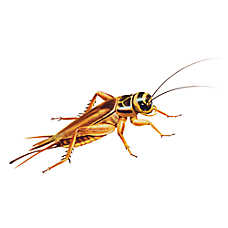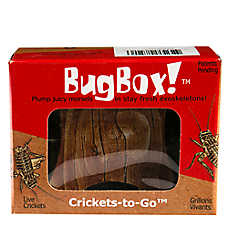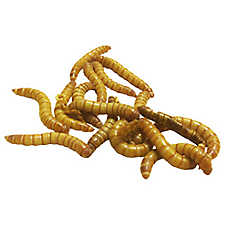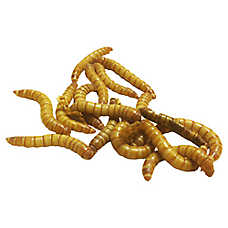A Quick Reference into Feeder Bugs
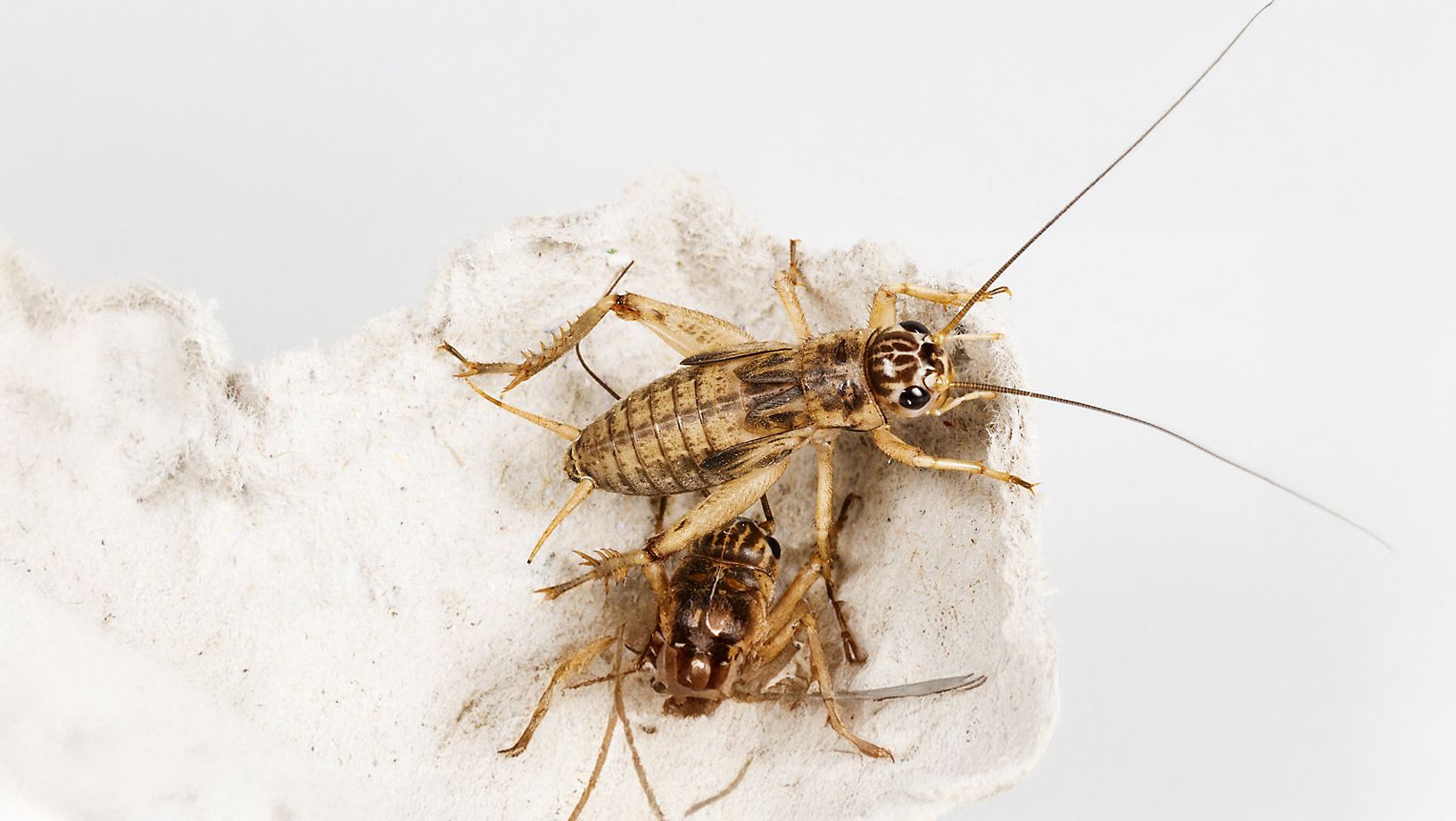
In this Article
What Are “Feeder Bugs?”
Feeder bugs are bugs that are intentionally fed to other pets. Some common pets that eat feeder bugs include reptiles, amphibians, spiders, scorpions, and crabs. Some of these animals, like vampire crabs and many reptiles, eat bugs as an important part of their diet in addition to fruits, vegetables and other items. Whereas other animals, like spiders and scorpions, are true insectivores and only eat bugs as their primary diet.
The true answer is that almost any bug could be considered a “feeder” bug if being used to feed another animal regularly. While most people keep bugs as a food source for another animal, someone else may keep bug colonies as a hobby or interest. Some of the most common bugs used as feeders include crickets, dubia roaches, fruit flies, meal worms, wax worms, super worms and horn worms.
There are also some bugs commonly used in bioactive systems as they help keep enclosures clean. These are usually springtails and isopods. While usually used as the “janitorial crew” in bioactive systems, it is still entirely possible your pet may consume them, or they may even be your pet’s favorite treat. Even the tiny springtail could still make a snack for a jumping spider or small hermit crab if they encountered them in their habitat.
Where Do I Get Feeder Bugs?
When first sourcing feeder bugs, it is highly recommended to buy them from a trusted source.
Once purchased, you have two options. You can either maintain the colony of bugs you purchased, or you can use up your supply and purchase more or different bugs again from your local pet shop.
Can I Use Bugs From My Yard?
It is never recommended to feed bugs from your yard to your pet. This is because wild bugs, or bugs from an unknown supply, may contain parasites or other diseases that might make your pet ill. Additionally, wild bugs may have come into contact with pesticides or herbicides which could make your pet very sick if consumed. Even if you do not use herbicides or pesticides in your own yard, there is no way of knowing where the bug originally crawled from, what it may have been exposed to, or if it ate something toxic prior to arriving in your yard.
Can I Keep My Own Colony?
Keeping a self-sustaining colony, or multiple colonies of bugs, can be done with relative ease depending on the bug you want. Many bugs that are used as feeders, like dubia and meal worms, require little space and minimal maintenance. Keep in mind that in order to keep and maintain colonies long term (longer than approximately 2 weeks), you will also experience the bug’s full life cycle. For example, in order to maintain a colony of meal worms long term, the worms will successfully become pupa in a cocoon, then will become beetles, who eventually lay the eggs restarting the cycle.
How Do I Keep A Colony?
In order to keep a colony, you will need a safe enclosure that prevents the bugs from escaping, usually something like a small terrarium with a lid.
It is important to research the specific type of feeder bug your plan to keep, as they may need specific temperature or humidity range to undergo their entire life cycle. For example, mealworms are the larval stage of the darkling beetle, but when kept in a refrigerator set at 50F, they will stay in their larval stage instead of progressing to their next developmental stage. This works great if you just want to keep mealworms for a few weeks, but does not work well if you want to keep a self-sustaining colony. Conversely, other worms like superworms should always be kept at room temperature.
What Do I Feed And Water My Bugs?
If you don’t feed and hydrate your feeder bugs, they will not live very long, and will not be very nutritious to your pet. Hydration can be accomplished using bug water gel cubes, often sold in pet shops. While there are some commercial gel-diet options for bugs, other options are often more nutritious and can be used in addition to or in place of these gel diets.
Follow the table below for a quick guide on what else you can feed, and when to feed your feeders. Keep in mind the volume/quantity of food will be small, 1tsp to 1tbsp per feeding, or even less, depending on the size of your feeder colony and how fast they eat what you are providing.
A quick feeding guide for some common bugs used in reptile, spider, and scorpion keeping is as follows:
Bug | Food Options | How Often to Feed |
Crickets | Tropical fish flakes, Dark leafy greens (romaine, mustard greens, kale, and collard greens), Squash, Sweet potatoes, Carrots, Oranges, Apples, Potato peels, Alfalfa, Baby rice cereal, Wheat germ, crushed dog or cat kibble. Commercial cricket food | Food freely available, but refresh every 2 days. |
Dubia Roaches | Fruit, Dark leafy greens (romaine, mustard greens, kale, and collard greens), beets, carrots, cucumber, squash, bee pollen, zuchinni, crushed dog or cat food, commercial dubia food | Every 2-3 days |
Mealworms | Mealworms will eat their substrate, so we recommend using bran, rolled oats, oatmeal, or cornmeal for edible substrate options. Provide fruit and vegetables for hydration, like carrots, apples, potato, lettuce. | If kept in fridge: remove from fridge and allow to feed every 2wks. If kept at room temp: edible substrate freely available and offer fruit/vegetable 2x a week |
Isopods | Commercial Isopod food blend, leaf litter, softened wood, fish flakes, turtle food pellets, dried shrimp, dry eggshell, cuttlebone, dark leafy greens. Fruit and vegetables can be offered, but should be removed if moldy | Top up and offer new food weekly. Remove old food weekly, or at the first signs of mold. |
Springtails | Pinch of brewer’s yeast, nutritional yeast, crushed fish flake, couple grains of rice | Weekly |
What Does Gut-Loaded Mean?
When you see “gut-loaded” in reference to feeders, that refers to the diet of the feeder. Gut-loading involves feeding an intentional diet to the bugs in order to improve or increase their nutritional value. This is done to help make them more nutritious to the pet you then feed them to. This would mean feeding your bugs, usually about 24-48hrs, prior to feeding them to your pet.
Gut-loading is a separate idea to dusting bugs with supplement powder prior to feeding them to pets. For example, even if a cricket was fed a diet intentionally high in calcium, it would likely still not provide enough calcium alone to keep a bearded dragon healthy. This is why it is important to gut-load AND dust with proper supplementation.
Shopping Checklist
- 5- to 10-gallon (19-38 L) critter keeper/cricket pen
- Egg carton or other similar products for climbing and hiding
- Shallow water dish
- Shallow food bowl
- Water gel crystals
- Fortified feeder insect gut-loading diet
Shop reptile feeding accessories at PetSmart today.
